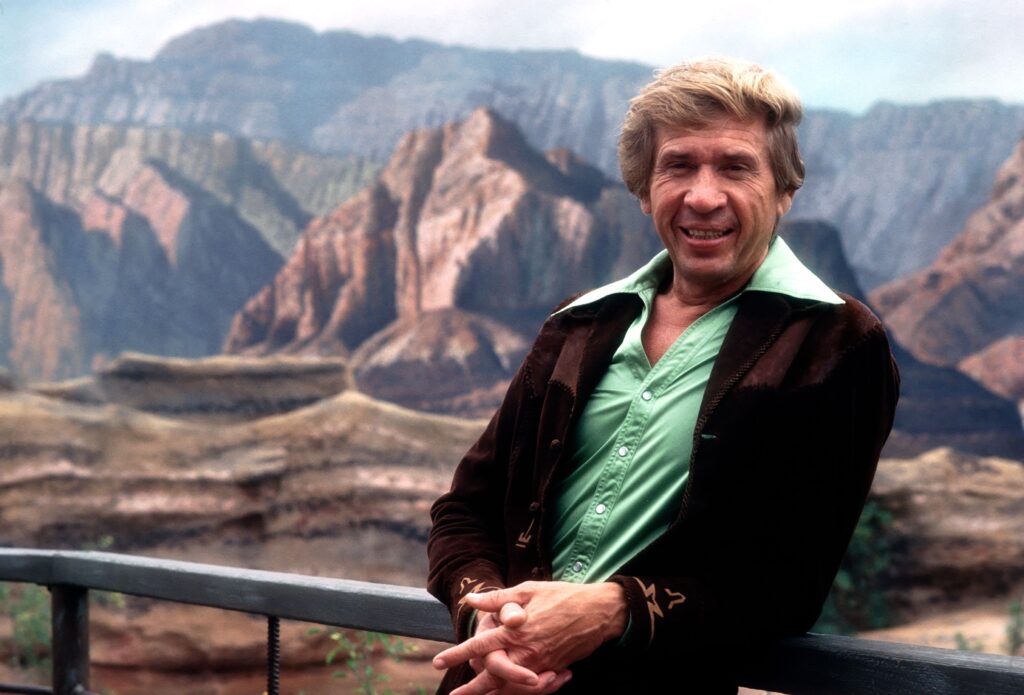
A Rockabilly Revival That Sizzles With Joyful Rebellion and Timeless Swagger
Released during a period when country music was embracing polished production and Nashville smoothness, Buck Owens’ rollicking “Hot Dog” stands as a sizzling throwback to the raw energy of rockabilly’s golden age. Though most widely recognized as a titan of the Bakersfield Sound—a genre-defining alternative to mainstream country in the 1960s—Owens’ roots reached deeper into the rhythms of early rock ‘n’ roll. Originally recorded in 1956 under the pseudonym Corky Jones, “Hot Dog” predates Owens’ major chart successes, showcasing a side of him that was less bound by honky-tonk tradition and more in tune with the unbridled spirit of rockabilly. It was only decades later, in 1988, that he re-recorded and released “Hot Dog” under his own name on the album also titled Hot Dog!, capitalizing on a resurgence of interest in rockabilly and retro Americana. Though it didn’t chart notably at the time of its re-release, the song has since earned a cult status among aficionados for its infectious exuberance and historical resonance.
The genesis of “Hot Dog” is a fascinating glimpse into Owens’ multifaceted musical identity. In the mid-1950s, country artists often treaded carefully around the burgeoning world of rock ‘n’ roll, wary of alienating their core audiences. But Owens, ever adventurous, recorded this track in 1956 for the small Pep label. To shield his rising country reputation, he adopted the alias “Corky Jones,” masking his flirtation with this rebellious new sound. The result is electrifying—a two-minute burst of slap-back echo, nimble guitar picking, and brash vocal swagger that channels Elvis Presley’s early Sun Records sides with an authenticity few country artists could muster.
Lyrically, “Hot Dog” is a study in youthful bravado wrapped in rockabilly flair. The titular phrase serves not as a culinary reference but as an exclamation—a shout of exhilaration from a narrator intoxicated by love or lust. “Hot dog! I love you so,” he croons with reckless abandon, his voice dancing atop galloping bass lines and jangling rhythm guitar. There’s no complexity here, no introspective melancholy or veiled metaphors—just pure emotional release filtered through hip-shaking tempos and twang-laced joy. In this way, the song captures something elemental about mid-century American youth: unburdened desire paired with an irrepressible need to move, to dance, to rebel against restraint.
What makes “Hot Dog” endure is not merely its catchy melody or vintage charm—it’s what it reveals about Buck Owens himself. Long before he became synonymous with Bakersfield honky-tonk and Hee Haw television fame, Owens was a musical polyglot who absorbed everything from Bob Wills’ western swing to Chuck Berry’s guitar-driven grooves. In revisiting and re-releasing “Hot Dog” in 1988—over three decades after its obscure debut—Owens wasn’t just indulging nostalgia; he was reclaiming a formative piece of his artistic DNA.
In today’s era of genre fluidity and retrospective reverence, “Hot Dog” sounds less like an anomaly and more like an essential bridge—connecting early rock’s raw edge with country’s storytelling soul. It’s a testament to Buck Owens’ restless creativity and a reminder that sometimes, behind even the most buttoned-up legends lies a greaser in hiding, strumming chords with fire in his belly and rhythm in his bones.